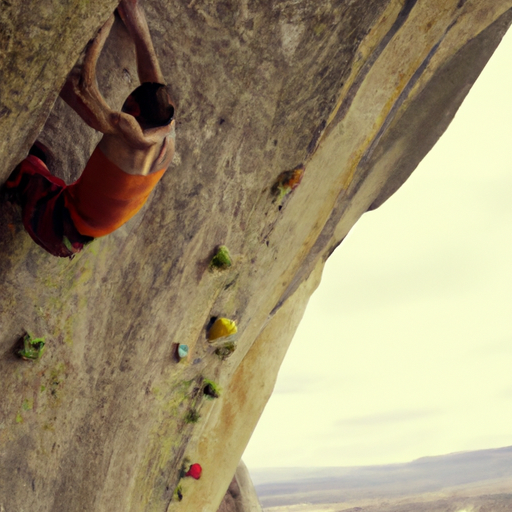-
Table of Contents
- The Role of Yoga in Climbing: Improving Flexibility and Strength
- Introduction
- Benefits of Yoga for Climbers
- Improving Flexibility
- Building Strength
- Reducing Risk of Injury
- Examples of Yoga Poses for Climbers
- Downward Dog
- Warrior II
- Tree Pose
- Case Studies
- Case Study 1: Alex Honnold
- Case Study 2: Sasha DiGiulian
- Conclusion
The Role of Yoga in Climbing: Improving Flexibility and Strength

Introduction
Climbing is a physically demanding sport that requires strength, endurance, and flexibility. It involves using your hands, feet, and body to ascend steep walls, rocks, or mountains. Many climbers incorporate yoga into their training regimen to improve their flexibility and strength. Yoga is a practice that originated in ancient India and involves a combination of physical postures, breathing exercises, and meditation.
Benefits of Yoga for Climbers
Improving Flexibility
Flexibility is an essential aspect of climbing as it enables climbers to move their bodies into different positions and reach difficult holds. Yoga postures help to lengthen and stretch muscles, improve joint mobility, and increase range of motion. The practice of yoga can help climbers to develop a greater awareness of their body and its limitations, allowing them to move more efficiently and effectively on the wall.
Building Strength
Climbing requires both upper and lower body strength. Yoga postures such as plank, downward dog, and chaturanga dandasana help to build core, arm, and shoulder strength. These muscles are essential for climbers as they provide stability and allow for the transfer of weight from one hold to another.
Reducing Risk of Injury
Climbing can be a high-risk sport, and injuries are common. Many climbers suffer from shoulder, wrist, and elbow injuries due to the repetitive stress placed on these joints. Yoga can help to reduce the risk of injury by improving joint mobility, increasing muscle strength, and promoting proper alignment. The practice of yoga can also help to reduce muscle tension and stress, which can contribute to injury.
Examples of Yoga Poses for Climbers
Downward Dog
Downward dog is a yoga pose that stretches the hamstrings, calves, and spine. It also strengthens the arms, shoulders, and core. This pose is beneficial for climbers as it helps to increase flexibility in the hamstrings, which can improve balance and stability on the wall.

Warrior II
Warrior II is a yoga pose that strengthens the legs, hips, and core. It also stretches the groin, chest, and shoulders. This pose is beneficial for climbers as it helps to build lower body strength and improve balance and stability.

Tree Pose
Tree pose is a yoga pose that improves balance and stability. It also strengthens the legs, ankles, and core. This pose is beneficial for climbers as it helps to improve balance on the wall and reduce the risk of falls.

Case Studies
Case Study 1: Alex Honnold
Alex Honnold is a professional climber who is known for his free solo ascents of some of the world’s most challenging climbs. Honnold incorporates yoga into his training regimen to improve his flexibility and strength. He believes that yoga helps him to stay calm and focused while climbing and reduces the risk of injury.
Case Study 2: Sasha DiGiulian
Sasha DiGiulian is a professional climber who has won multiple national and world championships. DiGiulian incorporates yoga into her training regimen to improve her flexibility and strength. She believes that yoga helps her to stay focused and calm while climbing and reduces the risk of injury.
Conclusion
In conclusion, yoga can be an effective training tool for climbers. It helps to improve flexibility, build strength, and reduce the risk of injury. Incorporating yoga into a climbing training regimen can help climbers to improve their performance on the wall and achieve their goals. Examples of yoga poses that are beneficial for climbers include downward dog, warrior II, and tree pose. Case studies of professional climbers such as Alex Honnold and Sasha DiGiulian demonstrate the effectiveness of yoga for climbers.
Check out the book “Climbing is the New Yoga” to learn how incorporating yoga into your climbing routine can enhance your performance on the wall.


Leave a Reply